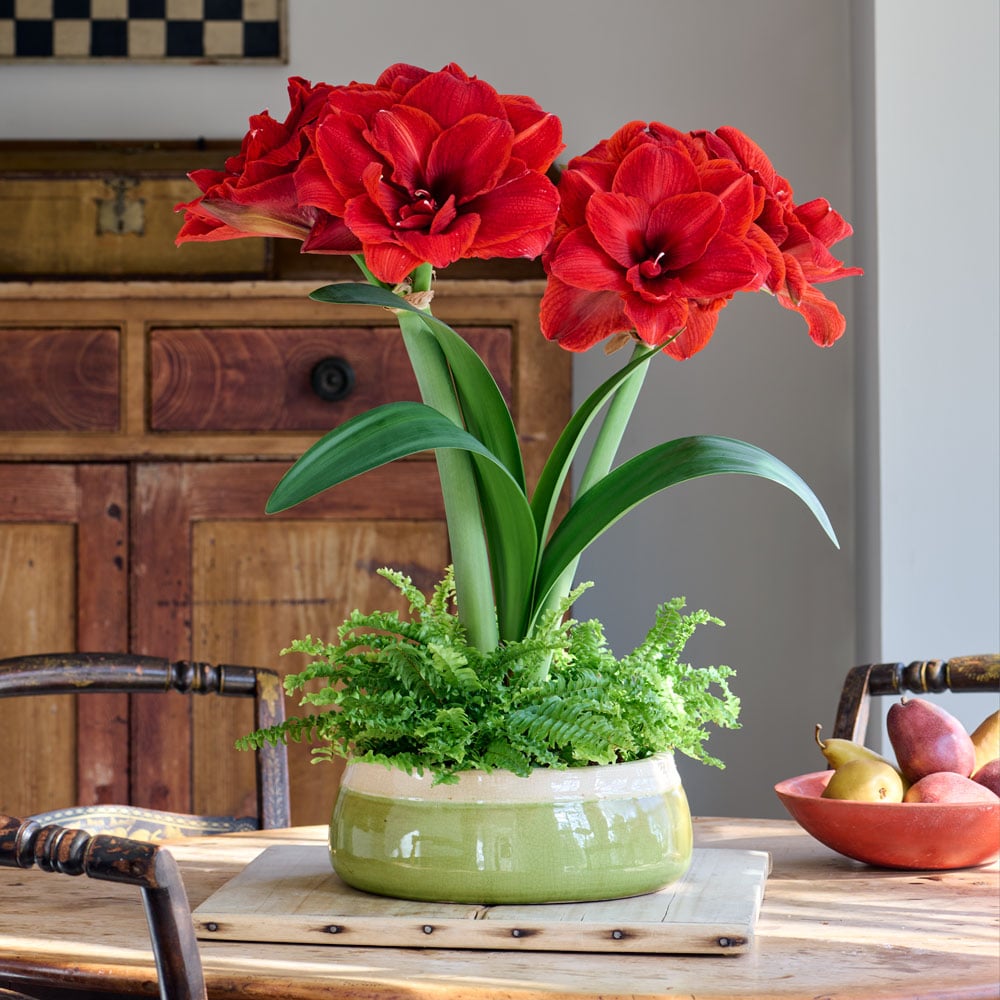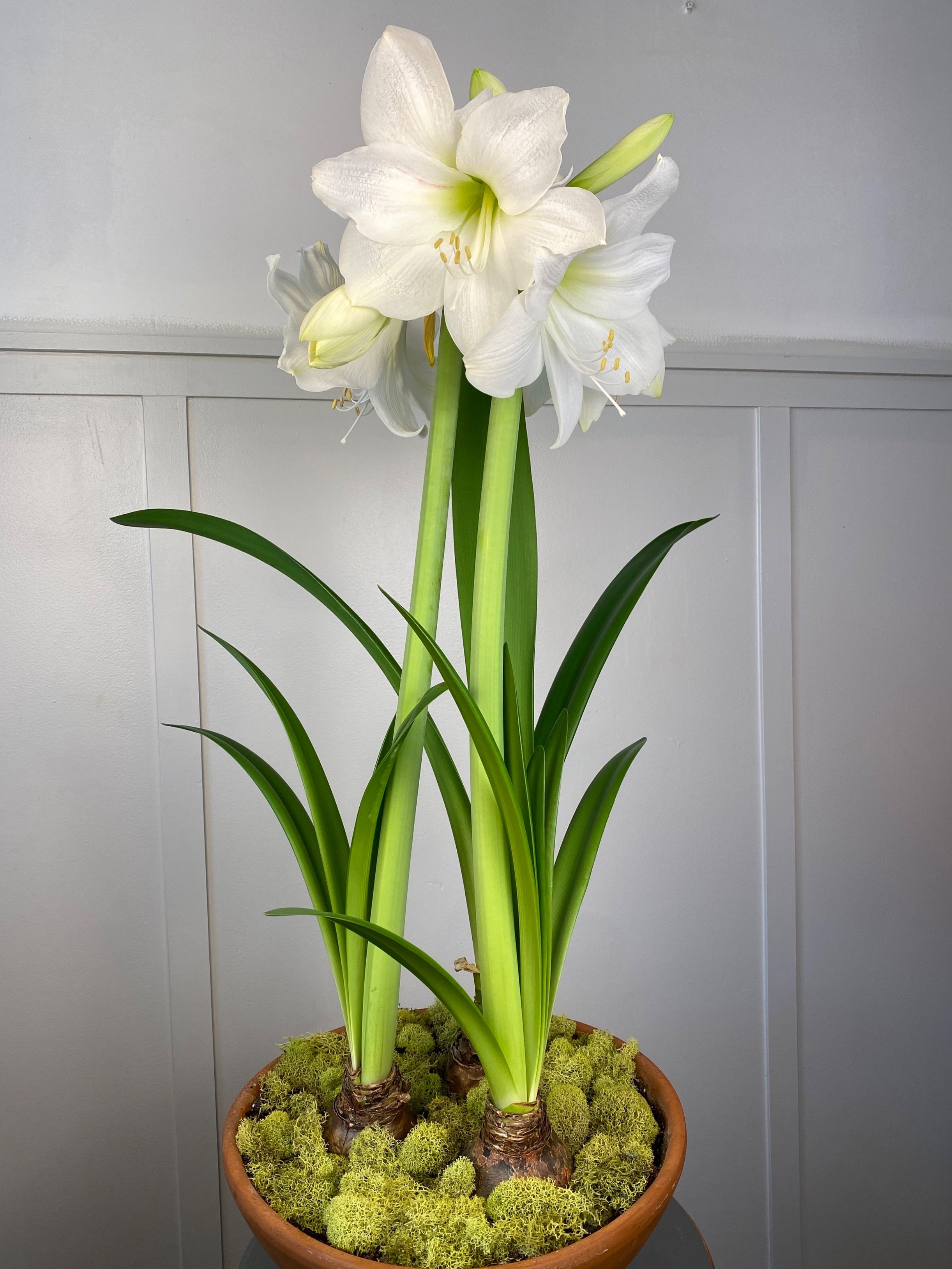The Stunning Amaryllis: More Than Just a Pretty Bloom
When you think of a plant that can really steal the show, the Amaryllis probably pops into your head. Those big, trumpet-shaped flowers in vibrant colors – reds, pinks, whites, even stripes – are just breathtaking. But there’s so much more to this plant than just its good looks. It has a fascinating life cycle, a bit of a dramatic flair, and it’s surprisingly easy to care for, making it a favorite for plant lovers of all levels.
What Exactly Is an Amaryllis?
Now, here’s a little botanical tidbit that might surprise you. What we commonly call “Amaryllis” is actually a plant from the genus Hippeastrum. The true Amaryllis is a different, though related, genus with only one species, Amaryllis belladonna, often called the Belladonna Lily or Naked Lady Lily. But don’t worry too much about the technicalities! For most of us, when we say Amaryllis, we’re talking about those gorgeous Hippeastrum bulbs that brighten up our homes, especially around the holidays.

These plants are native to tropical and subtropical regions of the Americas, particularly South America. This warm origin explains why they thrive indoors in cooler climates and put on such a spectacular floral display. They’re bulbous plants, meaning they grow from a large, onion-like structure called a bulb, which stores all the nutrients the plant needs to grow and flower.
The Amazing Life Cycle of an Amaryllis
The Amaryllis has a pretty interesting routine. It usually starts with a dormant period, often after it has finished flowering. During this time, the leaves might start to yellow and die back. Don’t panic! This is a natural part of the cycle. The bulb is essentially taking a rest, gathering energy for its next big show.
Then, with the right conditions – usually a bit of warmth and moisture – the magic begins. A thick, sturdy flower stalk will emerge from the bulb, sometimes even before any leaves appear. This stalk grows surprisingly quickly, and soon, you’ll see the buds forming at the top. The anticipation builds as these buds swell and slowly start to reveal their vibrant colors.

Finally, the grand opening! One by one, the magnificent flowers will unfurl, often lasting for several weeks. Depending on the variety, you might get two, four, or even more of these impressive blooms on a single stalk. It’s truly a rewarding experience to watch this whole process unfold.
After the flowers fade, the Amaryllis will typically focus on growing its long, strap-like leaves. These leaves are crucial for photosynthesis, allowing the plant to produce food and store energy back in the bulb for future flowering.
Caring for Your Amaryllis: It’s Easier Than You Think
One of the great things about Amaryllis is that they aren’t fussy. Give them a few key things, and they’ll reward you with those stunning flowers.

# Light
Amaryllis loves bright, indirect light. Placing them near a sunny window is ideal, but avoid direct, harsh sunlight, which can scorch the leaves. As the flower stalk grows, you might notice it leaning towards the light. To keep it growing straight, simply rotate the pot every few days.
# Watering
Watering needs change throughout the Amaryllis’s life cycle. When the bulb is dormant, you can pretty much forget about watering it. Once you see the flower stalk emerging, start watering sparingly. As the plant grows and flowers, increase watering, keeping the soil consistently moist but not waterlogged. Make sure the pot has drainage holes so excess water can escape. After flowering, continue to water regularly as the leaves grow. When the leaves start to yellow and die back, gradually reduce watering, eventually stopping altogether during the dormant period.
# Soil and Potting
A well-draining potting mix is best for Amaryllis. You don’t need anything too fancy. When potting or repotting, choose a pot that’s only slightly larger than the bulb. The bulb should sit with its “shoulders” above the soil line. A heavy pot is also a good idea, as those big flowers can sometimes make the plant a little top-heavy.
# Temperature and Humidity
Amaryllis prefers average room temperatures, around 65-75°F (18-24°C). They don’t need high humidity, so normal household humidity is usually fine.
# Encouraging Reblooming
Getting your Amaryllis to rebloom is totally achievable! After the flowers fade, cut the flower stalk close to the bulb. Continue to water and fertilize the plant regularly, allowing the leaves to grow and photosynthesize. In late summer or early fall, you can initiate the dormant period by gradually withholding water and allowing the leaves to die back naturally. Once the leaves are completely dry, you can cut them off and store the bulb in a cool, dark, and dry place for about 6-8 weeks. After this resting period, repot the bulb with fresh soil and start the watering cycle again to encourage new growth and hopefully, more beautiful blooms!
The Amaryllis: A Symbol of Beauty and Pride
Beyond its visual appeal, the Amaryllis has also come to symbolize beauty, pride, and even determination. Its striking flowers and the way it confidently displays them make it a fitting emblem for these qualities. Giving an Amaryllis as a gift can be a lovely way to convey admiration and appreciation.
In Conclusion
The Amaryllis plant is a true showstopper, bringing vibrant color and a touch of elegance to any space. From its fascinating life cycle, starting with a dormant bulb and culminating in those magnificent trumpet-shaped flowers, it’s a plant that never fails to impress. And with its relatively easy care requirements, it’s a rewarding choice for both seasoned plant enthusiasts and beginners alike. So, whether you’re looking to add a splash of color to your home or searching for a meaningful gift, the Amaryllis is definitely a plant worth considering.
Frequently Asked Questions About Amaryllis
What should I do if my Amaryllis flower stalk gets too tall and starts to lean?
You can gently stake the flower stalk with a thin stick or dowel rod to provide support and keep it upright. Also, remember to rotate the pot regularly so the plant grows evenly towards the light.
My Amaryllis flowered beautifully, but now the leaves are starting to turn yellow. Is something wrong?
Not necessarily! This is a natural part of the Amaryllis’s life cycle. After flowering, the plant focuses on growing leaves to produce energy for the bulb. As it prepares for a dormant period, the leaves will naturally start to yellow and die back. Simply allow them to do so and then remove them.
How long does it usually take for an Amaryllis bulb to flower after planting?
Generally, it takes about 6-8 weeks from planting the bulb to seeing the first flowers open. However, this can vary depending on the size and condition of the bulb, as well as the environmental conditions.
Can I plant my Amaryllis bulb outdoors?
In regions with mild climates (typically USDA zones 8-10), Amaryllis can be grown outdoors. However, in colder climates, they are best grown in containers that can be brought indoors during the winter.
Why didn’t my Amaryllis rebloom this year?
Amaryllis Plant
